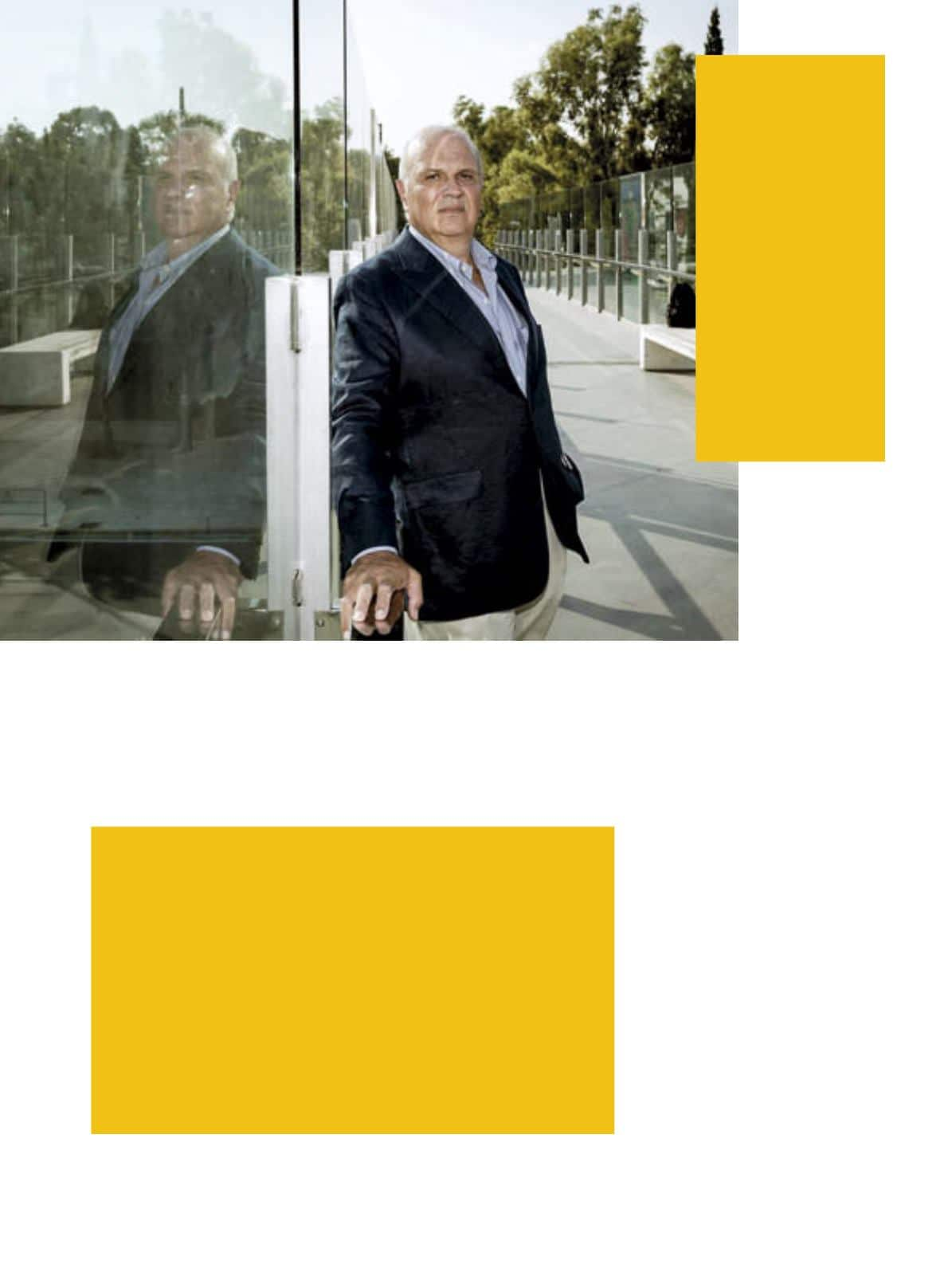

What is smart?
So what exactly is a smart city? “A
smart city has intelligence so we waste
fewer resources, we gain time, and we
improve the quality of life,” says
Spiro
Pollalis
, Professor of Design, Technology
and Management at the Harvard
Graduate School of Design. Smart cities
use information technology and digital
data to operate more efficiently, with a
focus on transport systems, energy, and
water supplies.
Spiro Pollalis
is Professor
of Design Technology
and Management at
the Harvard Graduate
School of Design
(HGSD). Professor Pollalis
is the chief planner
for the new smart city
DHA City Karachi and
the concept designer
of the information
infrastructure in the
new administrative
city, Songdo, in South
Korea. The HGSD aims
to provide solutions
to pressing global
issues such as rapid
urbanization and the
scarcity of resources.
Alex Herceg
leads the Efficient
Building Systems service at Lux
Research, an independent research
and advisory firm providing strategic
advice and ongoing intelligence
for emerging technologies. Here is
what he has to say about building
intelligence: “A building is like a
United Nations delegation: everyone
has the same topics on their mind
but they need a translator. It’s the
same within a building: a lighting
system has its own language and so
too does the heating system. In the
future we will see all the different
systems communicating with each
other in a sophisticated way. We
are moving down the path to high
performance buildings, but there’s
still a long way to go. We need to
see more innovation in sensors and
controls for existing buildings. It’s
not about making you live differently,
but about making your environment
function more smoothly, comfortably,
and efficiently.”
Bright buildings
When the term was first coined, it
was used to describe gleaming new
urban centers in the middle of the
desert or on greenfield sites, built from
the top down, according to a master
plan. But increasingly, smart city is a
term being applied to the retrofitting
of existing urban centers, growing
organically smarter from the bottom
up through a variety of innovations.
Professor
Carlo Ratti
, Director of
the SENSEable City Laboratory at the
Massachusetts Institute of Technology
(MIT), compares a smart city, or sensible
city, as he prefers to call them, to a
Formula One racing car. In the past,
success on the circuit was dependent
on the skill of the driver and the car’s
mechanics, but over the past two
decades “the car was transformed into
a computer that was monitored in
real time by thousands of sensors,
becoming ‘intelligent’ and better able
to respond to the conditions of the
“The best part of the
bridge is the sense of
flying when I cross
it,” says Professor
Spiro Pollalis about
the pedestiran bridge
over Kifissias Avenue
in Athens, Greece,
that he designed.
| PEOPLE FLOW
6



















